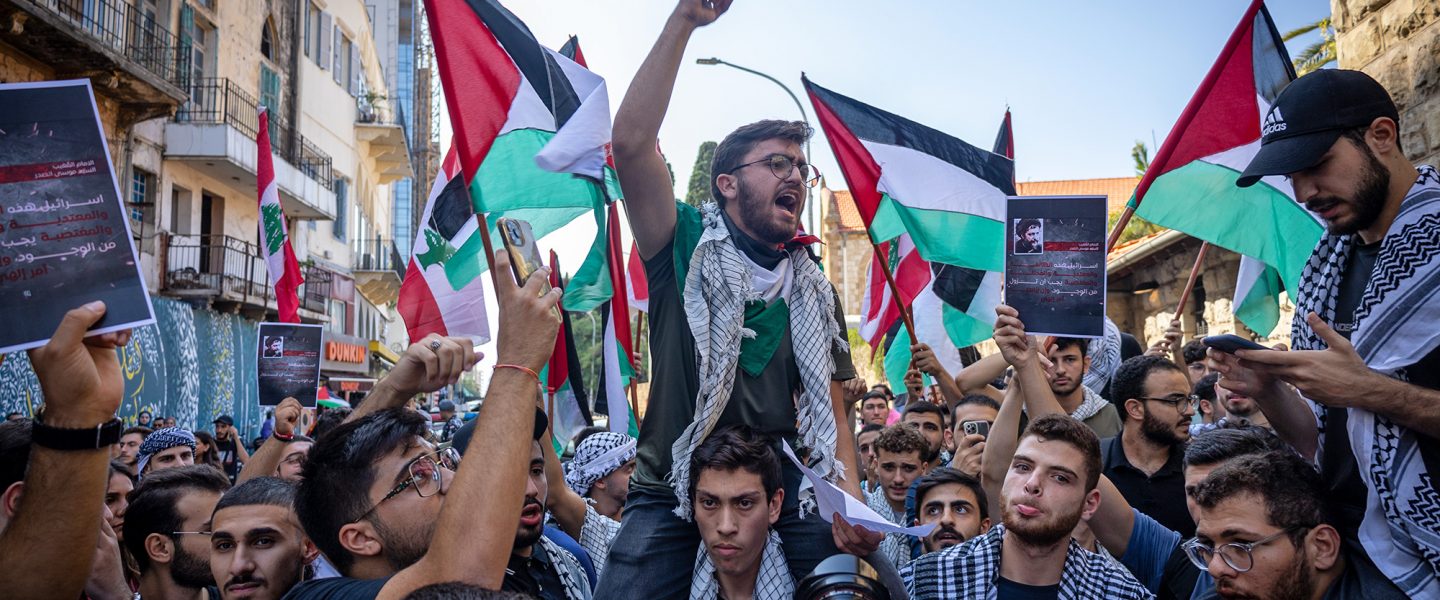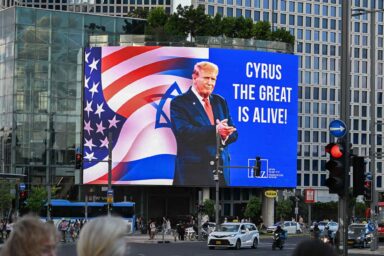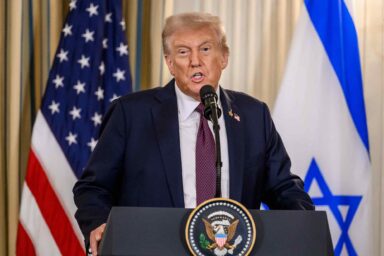Clashes with Hezbollah have intensified along Israel’s northern border, but the militant group, which has close ties to Iran, is still waiting to see what happens in Gaza.
|
Listen To This Story
|
SOUTHERN LEBANON — A defiant crowd, shouting, ”Death to America! Death to Israel!” carried the bodies of two Hezbollah fighters killed in a border skirmish not far from the southern Lebanese village of Khirbet Selm, last week. Flags and posters showing prominent Iranian and Shiite leaders left little doubt that Hezbollah is in charge, at least in this area near Israel’s border.
The funeral cortege in Khirbet Selm was just one of many demonstrations that have been taking place across Lebanon in the last several days. During the funeral, which lasted about an hour, the yellow flags of Hezbollah were prominently displayed everywhere. When the funeral was over, about a hundred mourners quietly dispersed.
“Only God knows if war will happen,” Mohammed Sherri, 35, a resident of Khirbet Selm, told me. “We don’t have a problem if war starts. Palestinians showed the world that Israelis are cowards and that Israel is more fragile than a spiderweb; we will show them something greater.”
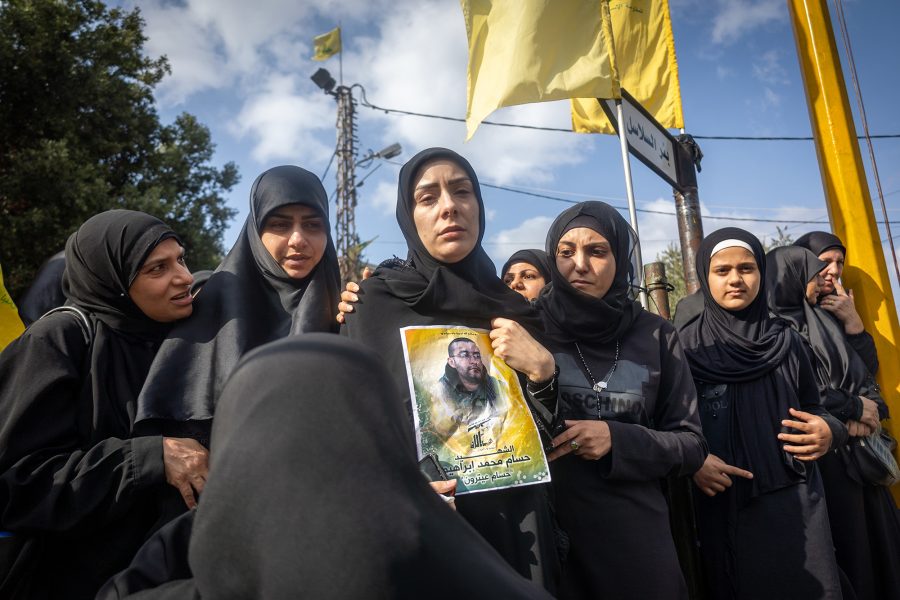
In the last few days, border clashes have intensified, leaving scores of civilians and combatants wounded or dead on either side. The action so far has mostly involved the occasional firing of a mortar or anti-tank rocket at a military location, establishing that Hezbollah is present, but not that it wants to do anything more — at least at this stage. Both Hezbollah and Palestinians in Lebanon say that they want to avoid open warfare, but there is also a sense that Hezbollah is slowly being dragged ever closer to war. “We are waiting for the right moment,” said Sherri. “We don’t mind being martyrs. We would be proud to die for the Palestinian cause.”
When Israel invaded southern Lebanon in 2006, the fighting with Hezbollah lasted a month and left 1200 Lebanese and 158 Israeli soldiers dead. Sherri says that back then he and the other villagers in Khirbet Selm sent their families away to keep them safe. “This time the war is going to be fought inside Israel,” Sherri said. “We are waiting for it.”
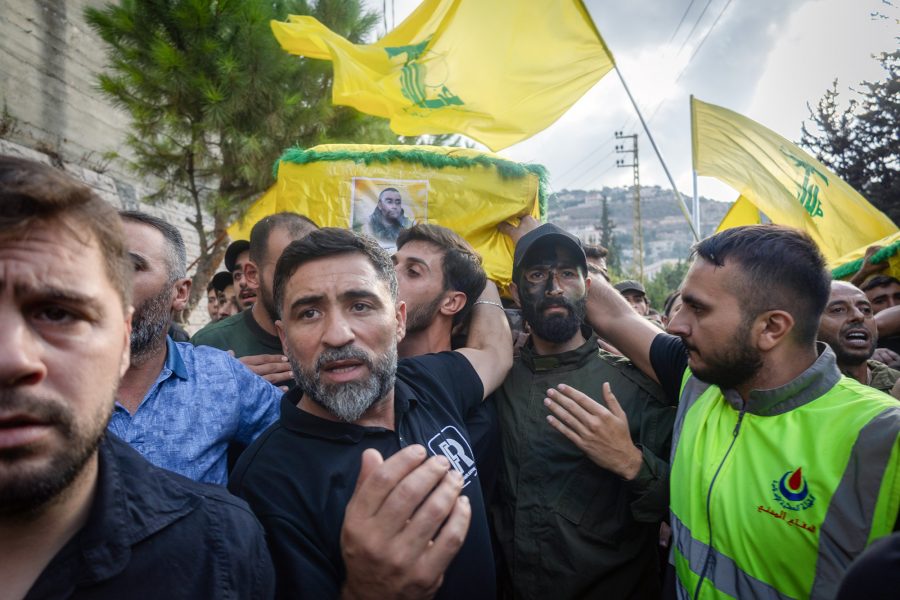
While US Secretary of State Antony Blinken spent the week conferring with regional leaders in an effort to deter outsiders from taking advantage of the situation, Hezbollah is feeling increasing pressure from Palestinians to take a more active role against Israel. Ali Mohammed, a 24-year-old Palestinian who lives in Tyre, a seaside city in southern Lebanon, acknowledged that Hezbollah is in a difficult position.
“Palestinians don’t agree with the way Hezbollah is retaliating,” he said, while we drank espressos in a seaside café. The atmosphere in Tyre at the moment is relaxed and very different from the days immediately after Hamas’s attack when everyone rushed to stock up on essential supplies and highways were jammed with people fleeing north, expecting war to break out at any moment.
The UN peacekeeping force in southern Lebanon, UNIFIL, has stepped up patrols along the border along with Lebanon’s army, but the UN force is too weak and the Lebanese state too fragile to stop a serious attack. Hezbollah has had an iron grip over the region since the Israelis withdrew after having invaded Lebanon in the 1980s. Hezbollah fighters and Palestinians circulate through the region freely.
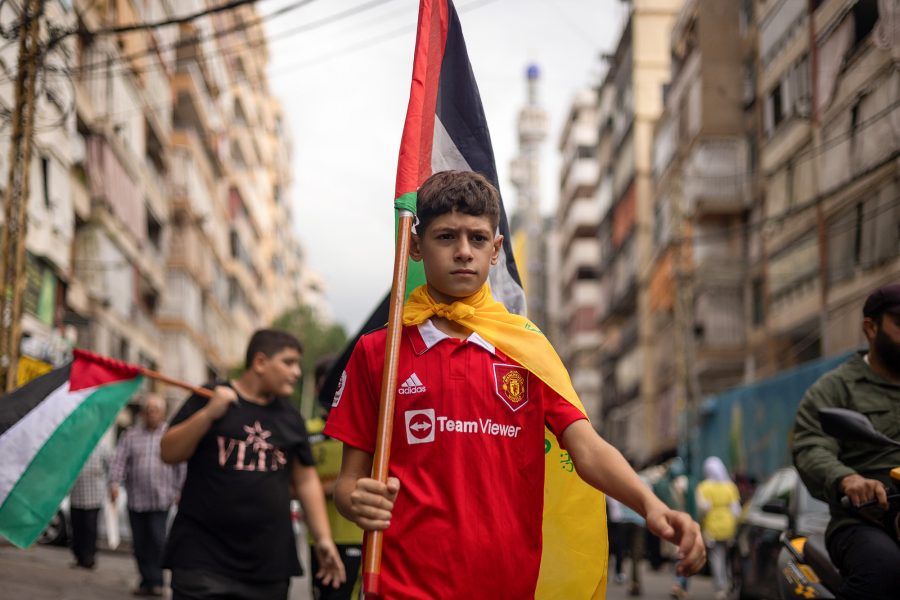
“It’s been like this since the Israeli invasion in the ’80s,” Mohammed said. “Hezbollah was the force that kicked Israel out of the south of Lebanon. That is why everyone respects them. It doesn’t matter if you agree with them politically or not. It doesn’t matter if you support them. They are our defenders, and everyone looks at them as the defenders of the south.”
While there has been some flight from southern Lebanon, Mohammed refuses to leave. To run away now, he feels, would be to invite defeat. “You can never get rid of the feeling that if you leave, you lose,” he said. “If you leave your house, it is gone.” While fighting along the border has increased, it is still aimed mostly at military bases. “In a way, it is still contained,” Mohammed said.
Some reactions in Lebanon are more nuanced. “We support the Palestinian resistance’s right to fight Israel on land that is Palestinian,” said Gebran Bassil, who heads Lebanon’s Free Patriotic Movement, “but we refuse to let anyone use Lebanon’s territory as a launchpad for military operations by anyone who is not Lebanese.”
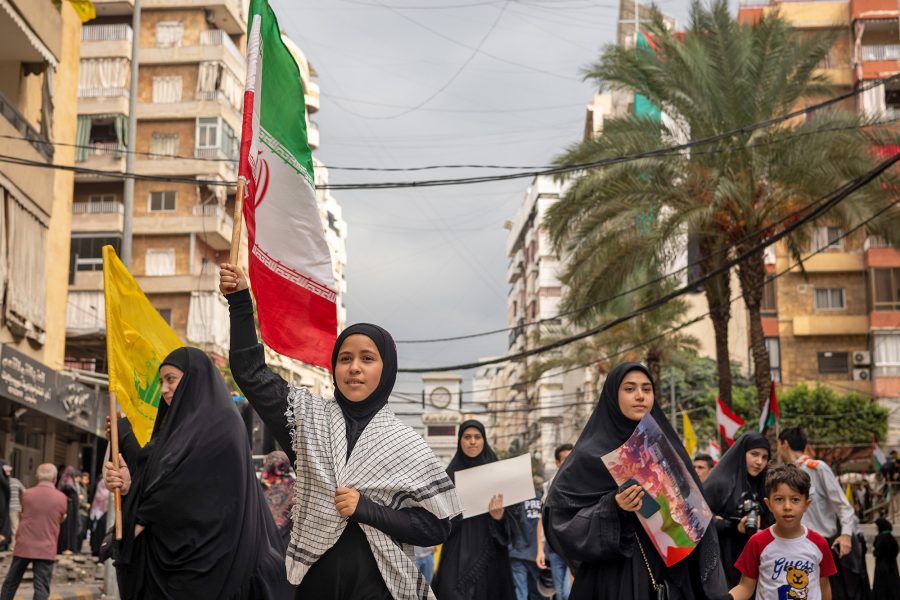
Mohammed, a Palestinian living in Lebanon, obviously does not agree. “The act of war, the act of defending yourself, that is a basic human right that should be supported, and it is supported by international law,” he says. “If you are being attacked, everyone should have the right to defend himself. If defending yourself means that you have to take the whole country to war against the country that is attacking you, then so be it.”
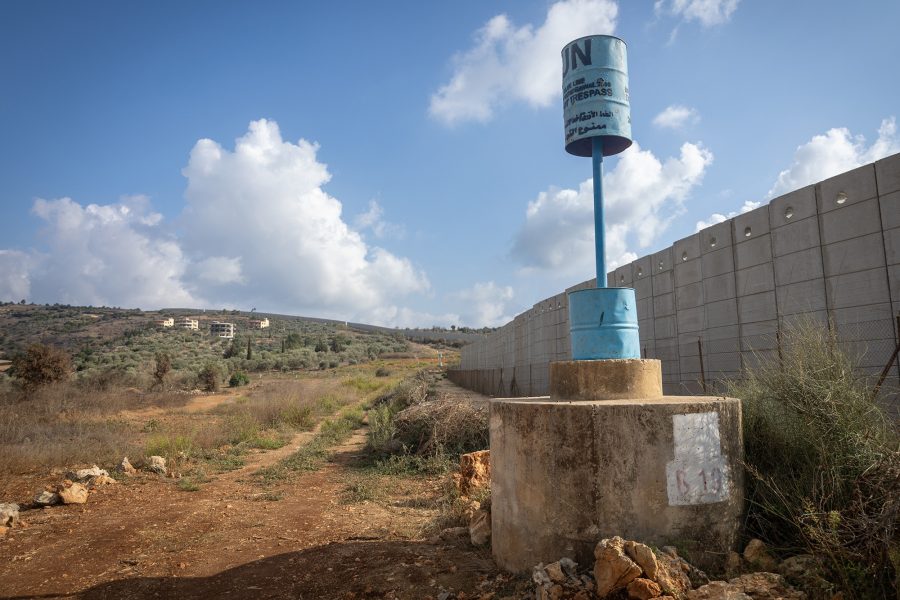
Although most of the recent casualties along the border have been combatants until now, several civilians have also been killed. Ali Swaid’s two adult children were among the casualties. Swaid, who is 65, was eating breakfast with his wife at his son’s home in the border village of Dhayra. His son’s house was only a hundred yards from the controversial, 30-feet-high concrete wall that separates Israel from the outside world.
As the family was sitting down to breakfast, fighting erupted. Hezbollah fired an anti-tank missile at an Israeli outpost. Swaid and his wife went to the basement to seek shelter from the return fire that Swaid expected the Israelis to unleash against Hezbollah. His son and daughter remained behind in the kitchen, finishing their breakfast. Swaid told them to drink their coffee and join them in the shelter. Moments later, an explosion blasted through the house. Ali emerged to find son and daughter seriously wounded and bleeding profusely.
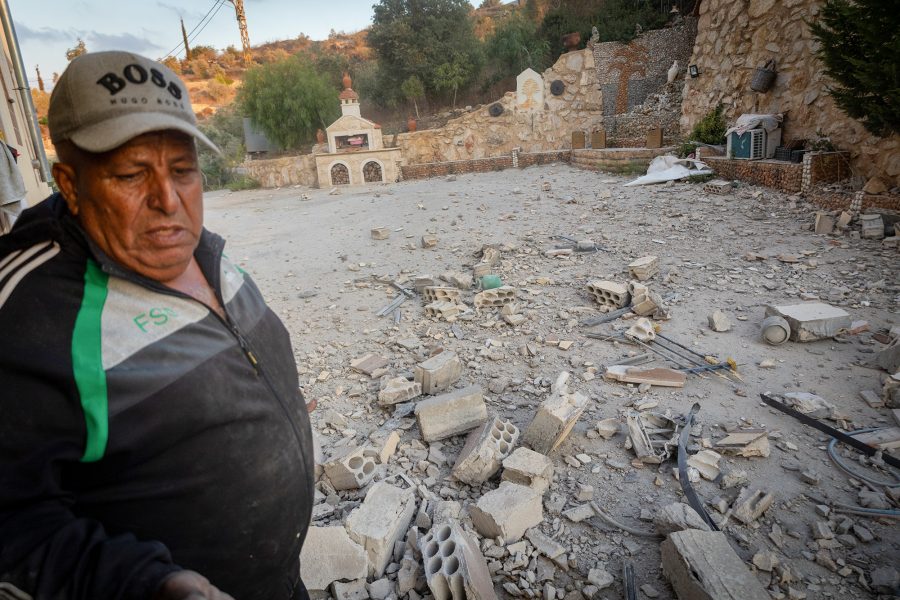
He phoned the Lebanese Red Cross, but was told that Dhayra was simply too dangerous to risk sending anyone. Finally, Swaid called another son who lives just north of Dhayra. He came and drove them to a location where the Red Cross felt safe to join them. By that afternoon, Swaid’s son was stable, but his daughter still needed an operation.
Swaid had no idea of what had destroyed his son’s house, but Israel reported that it had responded to attacks earlier in the day with artillery and air strikes. Standing outside his son’s home, Swaid was still caked with gray dust from the blast. We could hear the whining buzz of a drone, probably Israeli, hovering overhead. Swaid’s dog, Tiger, who had survived the blast, began barking.
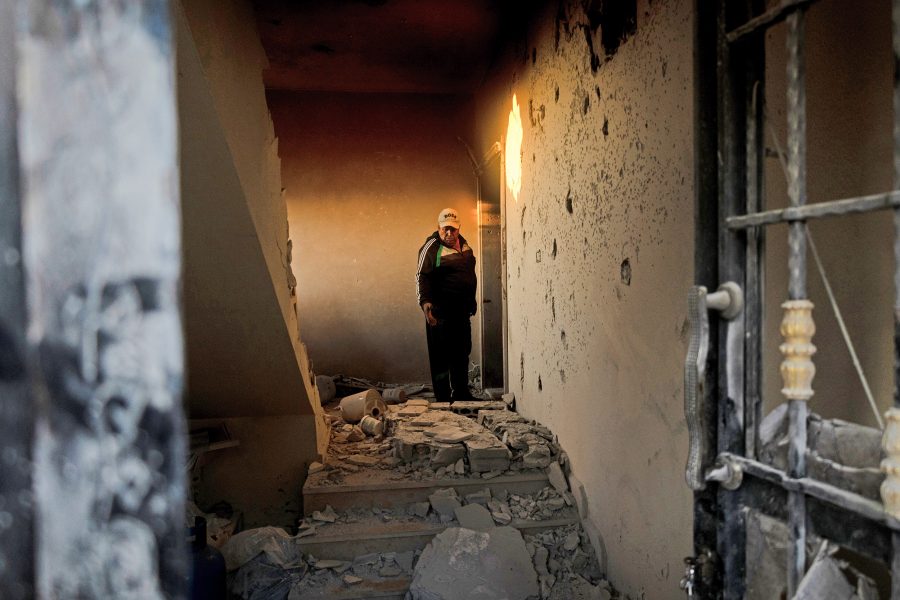
Inside the house, a hole had been blasted through the wall of the kitchen and blown out part of the opposing wall outside. The house was no longer structurally sound enough to live in. Swaid pointed at the mangled remains of what had once been his son’s refrigerator. “I bought it three or four months ago,” he said. “It cost me $1,500.” He had worked much of his life to have enough money to pay for his children’s homes. Now he faced ruin. There was no way he could pay to repair them.
“Where can we go now?” he asked. Less than a half hour later air raid sirens sounded on the Israeli side of the border. They echoed across the hills of southern Lebanon.
